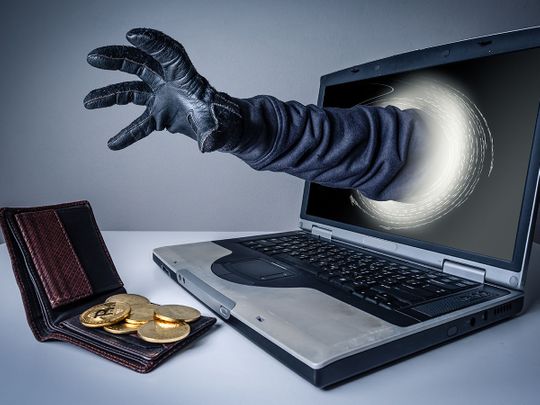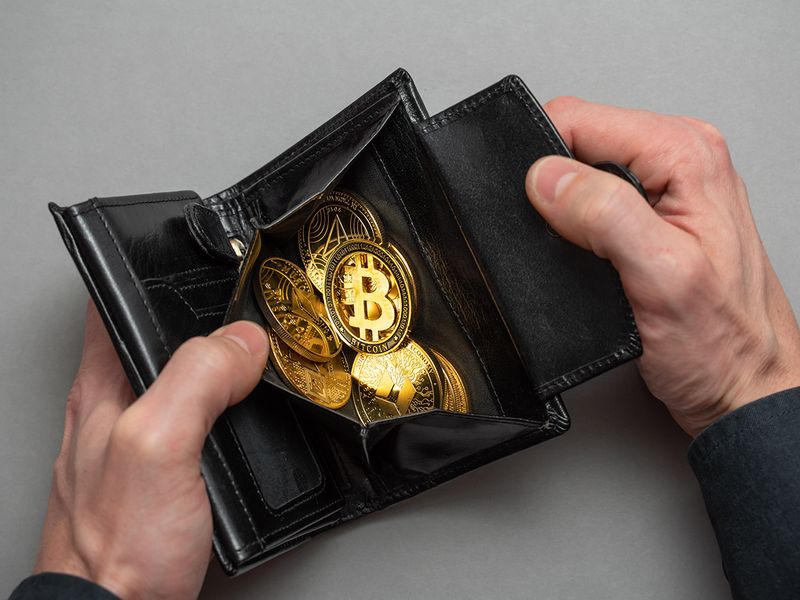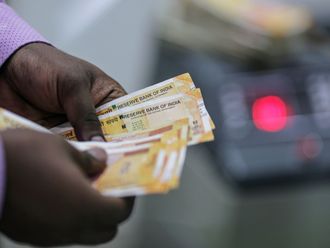
Dubai: If you have received a small unexpected deposit of crypto to your wallet from an unknown sender, you may have been ‘dusted’ or become a target of what is now referred to as a ‘crypto dust attack’. Here’s what you should know about such a scheme and how you can deal with or prevent it.
‘Dust’, in crypto lingo, refers to small amounts of cryptocurrencies you find left over in your wallet after making transactions. With the increasing popularity of cryptocurrencies, it is becoming more common for users to receive unsolicited crypto ‘dust’ from random addresses, global surveys reveal.
Receiving ‘crypto’ dust is not necessarily an indication of malicious activity as such a tiny amount of crypto dust is unlikely to be of any financial value
How hackers can make use of a ‘crypto dust attack’
With a ‘crypto dusting attack’, you are sent tiny amounts of crypto – below the amount required to trade the coin or token – to thousands or even hundreds of thousands of unsuspecting crypto holders through their wallet’s IP addresses. Here’s how hackers can take advantage of such deposits.
By doing so, hackers link the attacked addresses of wallets to the personal data of the target users, with the goal of monitoring the transactions that are made from that wallet, in order to gather information about the users and collectively use this knowledge against them in the future.
While it seems fiscally threatening, you cannot immediately lose your investments to these attacks, experts explain. Instead, miscreants use them to track users and plan further exploits through phishing scams or cyberextortion threats, which eventually enables them to profit off their targets.

So ‘crypto dust attacks’ cannot hurt you financially?
“Receiving ‘crypto’ dust is not necessarily an indication of malicious activity as such a tiny amount of crypto dust is unlikely to be of any financial value, but it is important to remain vigilant when dealing with ‘crypto dust’,” said Brian Deshell, a UAE-based cryptocurrency trader and analyst.
“The reason being the sender may use ‘dust’ to track how often a user checks their wallet and to determine their spending habits. Therefore, it is important to be aware of where the ‘crypto dust’ is coming from and what it is used for.”
So should you be worried about getting ‘dusted’ from random addresses? Not really, because crypto dust cannot be used to steal money or data, nor can it be used to access private accounts. However, it can be used to track user activity, making it risky even if the amount is very small. Here’s how.
For a ‘dust attack’ to take place, the ‘dust’ must be transferred, meaning the attacker wants you to add those small crypto deposits in the same wallet and send it out
How hackers use ‘crypto dust attacks’ to know who you are
“For a ‘dust attack’ to take place, the ‘dust’ must be transferred, meaning the attacker wants you to add those small crypto deposits in the same wallet and send it out. Only then the attacker will find out all the exchanges you use, and ultimately discover who the wallet owner is,” Deshell explained.
“So even if hackers were to carry out a dusting attack successfully, they wouldn’t be able to access your private key to exert control over your funds. If your wallet provider is big on security, new privacy measures rolled out periodically should keep you safe.”
While that’s not to say that ‘crypto dust attacks’ are not entirely without risk, Deshell cautioned that being aware of the above-mentioned potential risks when receiving crypto dust from unknown sources will help you be prepared when you end up being a target to such an attack.

When getting small crypto deposits in your wallet isn’t bad
So while ‘crypto dust’ can be an avenue for hackers to exploit, it is not inherently dangerous, as a user can also receive tiny amounts of crypto from analytics firms that study ‘dust’ for academic purposes, developers conducting stress tests by quickly sending a massive amount of dust.
This is why ‘dusting’ is a technique that needn’t necessarily be used for wrong intentions. So how would you identify which of these minuscule crypto deposits are used for good, and which of them are used to tracking your spending habits?
“If you notice such small crypto deposits in your wallet, check their origin. If you notice a suspicious source, contact your wallet security team for guidance. It would then be ideal to withdraw or exchange the deposits, but only few platforms convert ‘dust’ given their small size,” added Deshell.
• Use a secure wallet: Protect yourself from a ‘dusting attack’ by using a wallet that is secure and encrypted. A hardware wallet is the most secure, as it stores your private keys offline.
• Don’t share your wallet address: Avoid sharing your wallet address with anyone, as this could lead to a dusting attack.
• Use two-factor authentication: Setting up two-factor authentication for your wallet will make it more difficult for hackers to access your funds, even if they could.
• Monitor your transactions: Keep an eye on your wallet to make sure that any suspicious transactions are caught quickly.

Key takeaways
In summary, while ‘crypto dust’ is harmless by itself, when transferred to your wallet by a malicious attacker, it threatens your fund's safety. This is when it is referred to as a ‘crypto dusting attack’.
A ‘crypto dusting attack’ is a hacking attempt in which tiny amounts of cryptocurrency are sent to a large number of wallets in order to gather information about users.
The best way to protect yourself from a ‘dusting attack’ is to use a secure wallet, avoid sharing your wallet address, set up two-factor authentication, and regularly monitoring your crypto transactions.
Also, crypto experts recommend regularly updating your wallet and other crypto-related software to the latest version. This will help protect your funds from any new vulnerability or exploit.
With ‘crypto dust attacks’, while being a victim to it can initially be disturbing, the amount of cryptocurrencies sent is usually very small and unlikely to cause any real damage.
“In my opinion, the best fix is to avoid any ‘crypto dust’ transaction or ignore them completely as these amounts are untraceable – unless used. Also, the good news is these attacks are becoming less common due to rising network fees and no major consequences have been reported so far,” noted Deshell.










